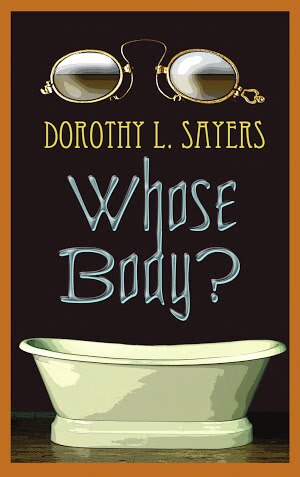

Normally, I’d be okay with all that, because I wouldn’t have noticed it distracted, as I would have been, by Wimsey’s clever banter or Sayers’ deft narrative. The result is a staginess that left me disengaged, unable to position the players and grasp the physics of much of what happened. Sayers achieves the requisite limited cast of suspects and witnesses by simply creating a London (and Salisbury) populated by a tiny circle of people who mostly know one another. There really were no other viable suspects and the motive turned out to be a combination of exactly what we all thought it would be and nonsense. It feels as though the ending is far too long in coming and when it does it falls a little flat. The resolution, in fact, is much closer to Holmes than it is to Poirot, in that the sleuth figures it all out in a very abstract and artistic manner rather than delivering the guilty party into the hands of a grateful Inspector Lestrade, complete with concrete evidence. It’s not unoriginal - the story’s comprised of eccentric characters and locations and situations (such as a body in a bathtub, wearing only someone else’s pince-nez).īut at about the two-thirds point Wimsey knows all and the reader knows a lot - certainly the killer has been obvious for a while and the rest rather falls into place from there, but that only means that Whose Body doesn’t fit the standard cosy convention of a dénouement consisting of a gallery of suspects and a dramatic reveal as close to the end of the book as possible. It’s not so much a whodunnit as a how and, more obtusely, whydunnit. Whose Body is poorly plotted in a much more mundane fashion. It was days after finishing Murder Must Advertise before I realised that it was, in fact, silly. The lyrical, astute social commentary (in particular the evisceration of the advertising industry which Sayers knew so well) of Murder Must Advertise doesn’t just compensate for the baldly absurd plot device of Wimsey pretending to be his own doppleganger and a supernaturally acrobatic harlequin, it paints over it entirely. And for me, usually, that doesn’t matter. There are lively debates in the mystery community over which of her stories is the most clumsily over-wrought (with The Five Red Herrings typically coming first or a very close second) but even at her best she wasn’t a patch on Christie at her worst.

That which I like about Dorothy L Sayers is abundant in Whose Body and so I find myself wishing it were possible to know what it would have been like were it not the first Lord Peter Wimsey book and/or written ten years later, say about the time that she wrote Murder Must Advertise.


 0 kommentar(er)
0 kommentar(er)
